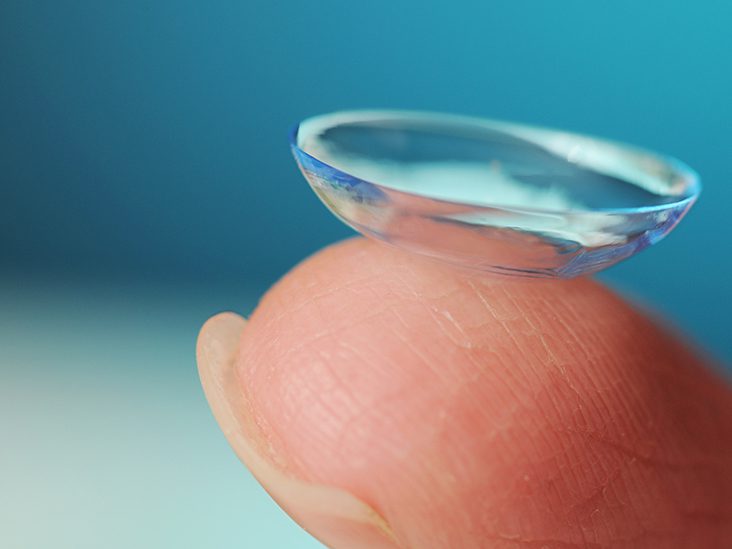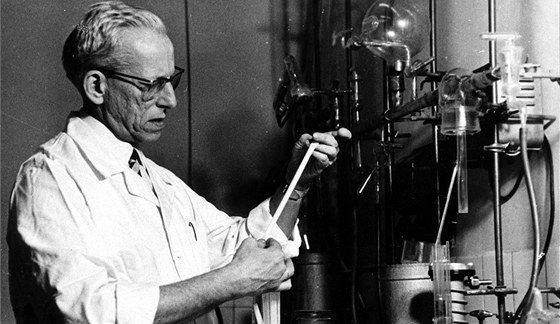The Czech culture has a vast portfolio of inventions that have changed our lives in one way or another—some of the discoveries we use in our daily routine without even knowing their origin. Discover what bright ideas Czechs brought to the realm of today’s world.
- Sugar cube (1843)
Who would have thought that the sugar we use every day when drinking coffee or tea has relation to the Czech Republic? Not us! Back in 1843, Jakub Kryštof Rad, a manager of the sugar factory, held the patent for the invention. Like many other inventions, it happened by accident.
At the time, sugar was sold by the loaf or lump, which were dense brown bricks of sweetness that needed to be split into usable portions with tools. Rad’s wife cut her finger while disassembling a loaf one day, so her husband came up with a remedy. Rad devised a way to pulverize sugar and then re-form it into teaspoon-sized pieces. It was ideal for hot beverages such as coffee and tea, and it was less than perfect for chilly drinks that didn’t dissolve quickly.


- The word ‘robot’ (1921).
The Czech playwright Karel Čapek began writing science fiction novels and plays in collaboration with his brother in 1921. Rossum’s Universal Robots (R.U.R) was completed after a year of perfecting tone and style. The play, about a factory full of sentient androids performing menial labor for their human masters, became a worldwide sensation.
It was the first time the word “robot” appeared in a text. The term “robot” was used in this sense to refer to artificial organisms. It comes from the Czech word “roboti,” which means “slave” or “drudge.” His robots were more closely identified with machines than with people; in 2021, we would most likely refer to them as cyborgs.


- Polarography (1922)
Jaroslav Heyrovský, a Czech chemist, invented polarography in 1922. In analytical chemistry, a chemical, electrochemical approach known as polarography or voltammetry is known as polarography.
The technique behind the polarograph is simple. When a predefined potential is supplied to two electrodes immersed in the investigated solution, Heyrovský’s apparatus monitors the current flows. The first polarograph was demonstrated in 1924, and the approach was widely used within ten years.


- Sobering-up station (1951)
We all know that Czechs love drinking beer and have an addiction to it. Jaroslav Skála was the first doctor in the Czech Republic to establish an alcohol detox clinic. Until the 1950s, alcoholism was treated primarily as a medical issue, not a moral failing. Patients were left home to fend for themselves, with a significant likelihood of self-destruction.
The sobering-up station helped more than 180,000 people during its first 30 years of operations. More than 1 million people were treated in other health facilities across the country. There were around 63 sobering-up stations in Czechoslovakia while it was at its height.


- Contact lenses (1961)
Approximately 25 million people suffer from impaired vision and have to either wear glasses or use lenses. Thanks to Otto Wichterle, a Czech chemist and professor, contact lenses are available to everyone around the globe.
Wichterle created a transparent hydrofoil plastic called “hydroxyethyl methacrylate,” which was mostly made of water and was soft and malleable while wet but hardened when dry. Later, he built a lens-making machine out of his son’s toy building kit and a little engine from a bike for Christmas in 1961. The first gel contact lens was born as a result of this ingenious invention.












Pharmacie Internationale en ligne http://kamagraenligne.com/# pharmacies en ligne certifiГ©es
cost of prednisone: clomidca – medicine prednisone 5mg
amoxicillin 50 mg tablets cheapest amoxicillin amoxicillin 500mg capsules
amoxicillin buy online canada: buy cheapest antibiotics – amoxil generic
amoxicillin discount: doxycyclineca – can i buy amoxicillin over the counter in australia
how can i get doxycycline doxycycline doxycycline otc drug
buy doxycycline 40 mg: doxycycline best price – 631311 doxycycline
can i buy doxycycline over the counter: azithromycinca – can i buy doxycycline over the counter in europe
can you buy generic clomid price clomid Prednisonerxa can i buy clomid without prescription
no prescription prednisone canadian pharmacy: buy online – generic prednisone cost
buying doxycycline uk doxycycline azithromycinca doxycycline 100mg best buy
buy amoxicillin: doxycyclineca – order amoxicillin no prescription
doxycycline capsule 100mg price azithromycinca buy doxycycline
where to buy generic clomid no prescription: prednisonerxa.shop – where to get generic clomid without rx
doxy 100 buy tetracycline antibiotics can you buy doxycycline over the counter nz
doxycycline prescription uk: buy tetracycline antibiotics – doxycycline pharmacy
can you buy zithromax online buy zithromax online zithromax 500 price
zithromax capsules: cheapest Azithromycin – zithromax buy online
buy amoxicillin online uk: amoxicillin – amoxicillin 500mg without prescription
prednisone canada pharmacy prednisone prednisone 7.5 mg
zithromax 250 mg australia: buy zithromax online – zithromax buy online no prescription
prednisone where can i buy: prednisone – buy prednisone online without a script
where can i get cheap clomid prednisonerxa.shop can i order clomid for sale
amoxicillin buy online canada: doxycyclineca – amoxicillin generic
can i buy doxycycline in india here how to order doxycycline
prednisone buy no prescription: Deltasone – prednisone 20mg capsule
prednisone 12 tablets price clomidca.shop prednisone 5084
doxycycline 75 mg capsules: here – doxycycline 225 mg
zithromax online usa zithromax zithromax antibiotic
get generic clomid: Clomiphene – can i get cheap clomid no prescription
amoxicillin for sale: amoxicillin – purchase amoxicillin online without prescription
doxycycline purchase azithromycinca buy doxycycline cheap
doxycycline online without prescription: doxycycline best price – buy doxycycline for dogs
amoxicillin 500 mg brand name amoxil best price amoxicillin no prescription
zithromax 500: Azithromycin – can you buy zithromax online
prednisone best price prednisone order prednisone 10 mg tablet
average cost of generic prednisone: clomidca.shop – price for 15 prednisone
amoxicillin cephalexin amoxil doxycyclineca purchase amoxicillin online
where can i buy zithromax uk: Azithromycin – buy zithromax online australia
cost of doxycycline in canada buy tetracycline antibiotics cheapest doxycycline uk
how to get prednisone tablets: Steroid – 3000mg prednisone
where to get generic clomid price prednisonerxa.shop can i buy generic clomid now
prednisone online pharmacy: Deltasone – prednisone over the counter australia
buy amoxicillin 500mg online buy cheapest antibiotics where to buy amoxicillin pharmacy
can i buy doxycycline in india: doxycycline – doxycycline 100mg without prescription
order generic clomid pill Clomiphene order clomid without a prescription
doxycycline without prescription: here – doxycycline 40 mg india
prednisone clomidca.com prednisone 20 mg prices
where can i get cheap clomid pills: prednisonerxa.com – cost of generic clomid without insurance
amoxicillin 500 mg brand name: amoxil best price – amoxicillin 500 mg capsule
doxycycline for sale over the counter buy tetracycline antibiotics order doxycycline 100mg
buy zithromax online cheap: buy zithromax online – zithromax 1000 mg pills
where can i buy amoxocillin amoxil online generic amoxicillin online
where can i buy zithromax medicine: Azithromycin best price – generic zithromax medicine
prednisone without a prescription buy online prednisone 2.5 mg price
can i buy amoxicillin online cheapest amoxicillin cost of amoxicillin 30 capsules
over the counter amoxicillin: amoxil – where to buy amoxicillin
generic for doxycycline: buy tetracycline antibiotics – doxycycline 200 mg pill
amoxicillin no prescipion amoxil best price cost of amoxicillin prescription
zithromax 250mg: buy zithromax online – order zithromax without prescription
zithromax online australia: zithromax – buy zithromax online cheap
amoxil generic: amoxil online – can i buy amoxicillin over the counter in australia
prednisone price: Steroid – 10mg prednisone daily
get generic clomid without prescription: cheap fertility drug – can i order cheap clomid without rx
how can i get cheap clomid without insurance: prednisonerxa.shop – where to buy clomid without a prescription
buy zithromax online australia: cheapest Azithromycin – cheap zithromax pills
amoxicillin 500mg capsules price: amoxil – order amoxicillin online no prescription
doxycycline 500mg tablets: here – doxycycline 100mg tablets
zithromax online usa: buy zithromax online – zithromax for sale online
zithromax online: buy zithromax amoxicillinca – zithromax 1000 mg pills
zithromax tablets for sale: amoxicillinca – buy zithromax online australia
order clomid price: clomid Prednisonerxa – cost generic clomid
buy amoxicillin online no prescription: amoxil doxycyclineca – amoxicillin 500mg capsules antibiotic
amoxicillin order online
mexican online pharmacies prescription drugs northern doctors pharmacy mexico drug stores pharmacies
medication from mexico pharmacy mexican pharmacy mexican pharmaceuticals online
https://northern-doctors.org/# mexico pharmacies prescription drugs
mexico pharmacies prescription drugs: mexican pharmacy – buying from online mexican pharmacy
mexican rx online northern doctors pharmacy buying from online mexican pharmacy
mexico pharmacies prescription drugs: medication from mexico pharmacy – mexico pharmacies prescription drugs
mexican pharmaceuticals online: mexican pharmacy northern doctors – mexican pharmaceuticals online
https://northern-doctors.org/# pharmacies in mexico that ship to usa
mexico drug stores pharmacies: mexican pharmacy northern doctors – pharmacies in mexico that ship to usa
http://northern-doctors.org/# medicine in mexico pharmacies
medication from mexico pharmacy mexican pharmacy online mexico drug stores pharmacies
mexico pharmacies prescription drugs: Mexico pharmacy that ship to usa – pharmacies in mexico that ship to usa
mexican rx online mexican drugstore online mexico pharmacies prescription drugs
https://northern-doctors.org/# mexican pharmaceuticals online
mexico drug stores pharmacies: northern doctors pharmacy – mexico pharmacies prescription drugs
mexican pharmacy: northern doctors pharmacy – п»їbest mexican online pharmacies
buying from online mexican pharmacy buying prescription drugs in mexico mexican online pharmacies prescription drugs
buying prescription drugs in mexico online: mexican pharmacy online – mexican online pharmacies prescription drugs
mexico drug stores pharmacies
http://cmqpharma.com/# reputable mexican pharmacies online
buying from online mexican pharmacy
mexico pharmacies prescription drugs mexico pharmacy best online pharmacies in mexico
mexico pharmacy cmq pharma mexican pharmacy buying prescription drugs in mexico online
mexico pharmacies prescription drugs mexican online pharmacy п»їbest mexican online pharmacies
mexico drug stores pharmacies mexico pharmacy buying from online mexican pharmacy
http://cmqpharma.com/# mexican pharmacy
mexican mail order pharmacies
https://clomiddelivery.pro/# where to buy cheap clomid without prescription
I’m extremely pleased to discover this website. I wanted to thank you for ones time just for this fantastic read!
My website: анальное порно